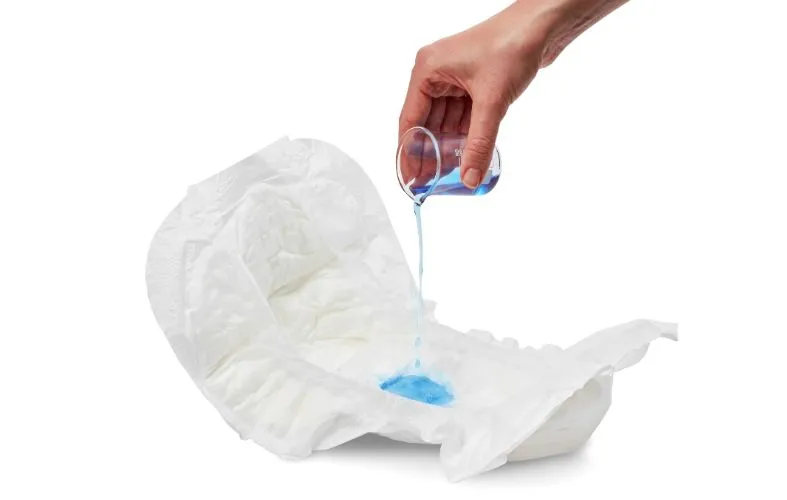
Share this page with friends
4 signs that your incontinence pad needs changing
Studies have found that up to 4 million people in the UK have some degree of urinary incontinence. That’s almost 10%. Yet, still, there is a distinct lack of helpful information out there to help people manage their bladder leaks. There are many ways you can lessen the impact bladder weakness has on your day-to-day life. One of which, is reading articles like this! The more you know about your products, the better you can manage them, saving yourself time, money and comfort levels in the long run.
Many people opt for disposable incontinence pads as they’re a solid all-rounder. They combine absorbency and discretion to provide an easy-to-manage incontinence experience. However, in order to ensure they work as desired and that your health and well-being are protected, it's important that you know when to change your incontinence pad.
How do I know if my pad needs changing?
It’s not always obvious to some people, especially if you’re looking after someone else. How can you know if their pads are wet? Well, the first place to look is on the pad itself. Most of them come with something called a ‘wetness indicator’.
For example, Vivactive Shaped Pads Maxi have a convenient wetness indicator that can be found on the outside of each pad. If the pad has absorbed liquid, a clearly defined blue line will appear on the outside.
Wetness indicators are a great feature and should be included on any incontinence pad worth its salt. Make sure you keep an eye out for them when you’re picking out a potential new pad.
There are some other signs that your pad might need changing. While the wetness indicator strip is a good start, you won’t always be in a position where it’s socially acceptable to whip your trousers down to check. Here are some more signs you might need to change your pad:
- Wetness. Users will likely feel wetness against their skin when a pad has reached its capacity. This is perhaps the most obvious indicator that it is time to change your pad. If you leave a wet pad against your skin for too long, it can lead to skin irritation and discomfort. You should think about changing the pad as soon as you can to maintain skin health and prevent issues like rashes or infections. If you’re experiencing wetness regularly, you might want to think about upgrading to a more absorbent pad.
- Unpleasant Odours. Generally, incontinence pads are designed to “lock in” unpleasant odours; however, if you begin to notice any unpleasant smells, you may want to switch to a fresh pad. Changing the pad promptly will help to maintain freshness. Nobody likes the smell of urine!
- Discomfort. Incontinence pads should feel comfortable. As such, any signs of discomfort, such as a rash developing, are key indicators that it is time to change your pad. If you’re experiencing discomfort a lot, it could mean that your pad may not be fitting properly. Or, that it has reached its capacity. Ignoring feelings of discomfort can lead to skin irritation and even sores, so make sure you do something about it if you’re feeling uncomfortable!
- Leakage. When a pad reaches its capacity, you may experience some leakage. Leakage not only causes discomfort, but it can also be pretty embarrassing. If you’re leaking, you might be in the wrong size or need a higher absorbency. Changing the pad can address immediate leakage, but in the long run, you might want to think about switching brands/products. On top of that, leakage can lead to wet clothing or bedding, requiring extra effort for cleaning and potentially impacting your daily activities and quality of life.

How to dispose of an incontinence pad.
While knowing when to change an incontinence pad is important, you should also ensure that it is disposed of correctly.
- Do not flush your pad down the toilet - this is really important. Firstly, flushing pads down the loo is going to lead to plumbing problems. Really bad, expensive, plumbing problems. If you’re lucky enough to dodge a plumbing mishap, by flushing them away you can contribute to major sewage blockages and damage to marine life. It’s thought that around 4.6 million disposable pads are flushed down the toilet every day.
- Remove the pad and place it in a nappy bag. Ensure that it is tied securely.
- Dispose of the bag.
Have you ever found yourself fiddling around with small nappy bags, or even baby nappy bags, trying to fit your adult pad in them? They’re simply not the built the same. All you’re going to do is make a mess. Instead, why not try nappy bags that are fit for purpose? Vivactive Nappy Bags XL are 240% larger than other nappy bags and less expensive than some leading brands.
They’re specially designed for adult incontinence products, whether they’re small, large or XL incontinence pads, they’ll fit. Not only are they larger than the ones you’d find in your local supermarket, but they’re also stronger and more durable, featuring long handles that can be tied in a tight knot.
Finding the right incontinence pad.
At Incontinence Choice, we have years of experience helping those with bladder control issues adjust to their changing lifestyle. This means it's easier than ever to find incontinence pads that work for you. For example, this could include Vivactive pads which are designed to help you feel fresh, comfortable and secure.





